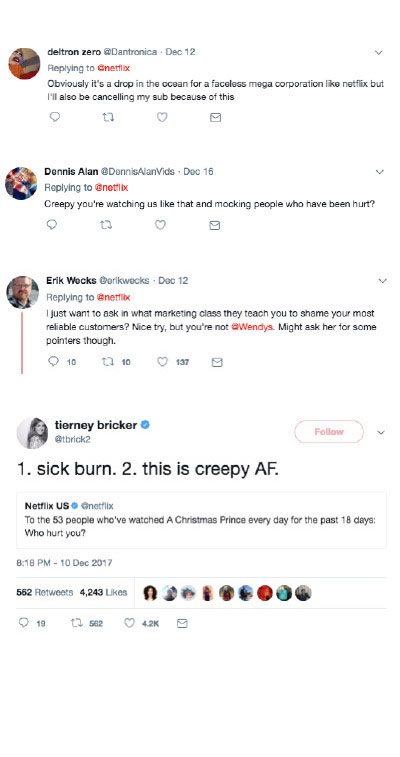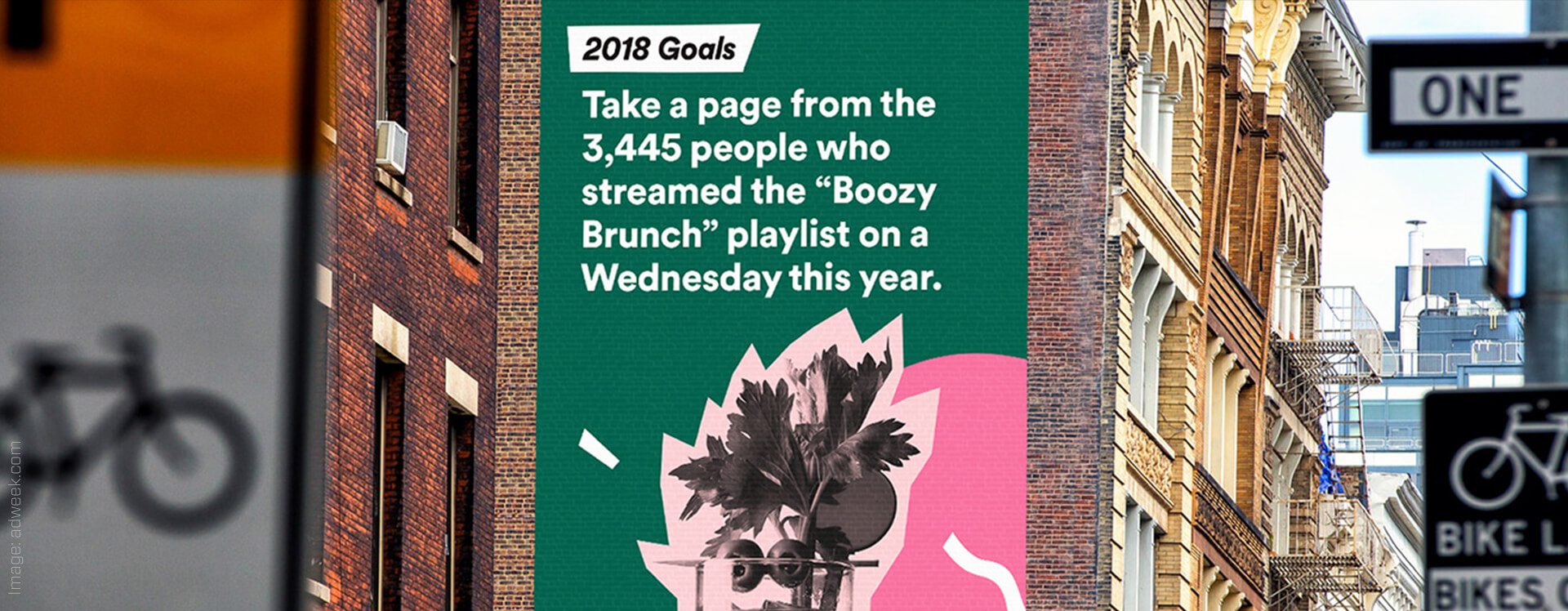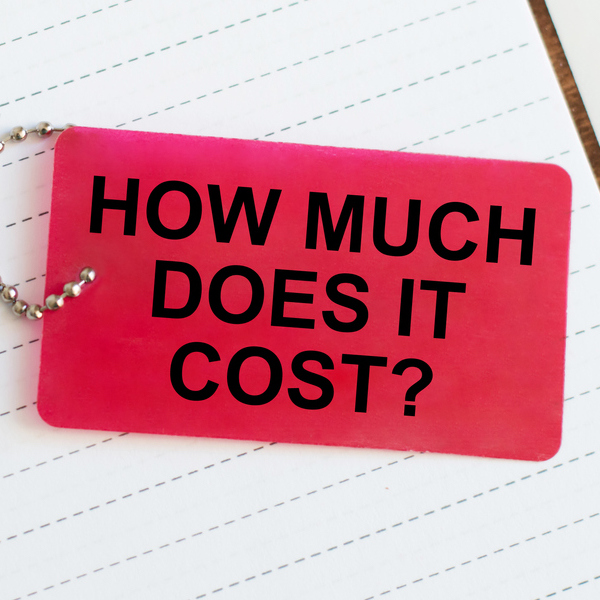Last Spring, I praised Spotify for their witty, data-driven billboard ads. Their clever out-of-home (OOH) creative aligned the weirdness of 2017 with the equally weird streaming habits of its users. Being one my favorite campaigns, I was elated to find out that they chose to extend the campaign with a sequel focusing on a more optimistic view of the year to come.
This year’s billboards present tongue-in-cheek New Year’s resolutions (called “2018 Goals” to give the postings a longer life past New Year’s Day) based on obscure and hilarious, streaming data. They also added street-level, classic carnival-like cutouts to the mix, encouraging folks to take and share photos online.





Spotify not only uses their aggregate data to reveal quirky or obsessive listening habits to the public, they provide each subscriber a personalized playlist for the past year and an interactive website. To entice users to interact with and share these websites, Spotify utilized quizzes to test the user’s own listening habits (i.e. “Do you really know who your top artist of the year was?”).


I live for this yearly tradition. I’m a Spotify fiend (as evidenced by my 44 straight days’ worth of streaming) and can’t wait to see how many minutes I racked up at the end of the year. I’m even more eager to see the strange streaming habits of my fellow Spotify addicts and how they translate to Spotify’s next OOH campaign. This kind of slicing and dicing of datasets my inner nerd on fire, and gets Spotify tons of free press from users sharing their stats while simultaneously making a personalized connection that very few monster corporations are able to execute. It’s a perfect example of a company correctly aligning its brand with a data-driven campaign.
As celebratory and wonderful as the Spotify campaign is, fellow technology giant Netflix’s attempt to use what they know about their audience was clumsy and alienating. They did a fine job of mining some unusual habits, but used it to be downright snide and nasty.
Rather than overtly copy Spotify with a billboard ad with a positive punch line, Netflix chose a social media push to tweet, and unfortunately, “troll” its users.
Here’s the tweet:

The fact that 53 people watched A Christmas Prince, a Netflix original production, 18 days in a row is certainly an outlier piece of data prime for promotion. The tweet did indeed go viral, but the backlash was brutal:


Rather than celebrating the unique streaming habits of its users, as Spotify did, Netflix ridiculed them. “Who hurt you?” comes across as judgmental and condescending, rather than praising their users’ uniqueness. I love free press and viral content as much as the next digital marketer, but not all press is good press and I’d argue that aggravating your consumer base not only impacts your bottom line, but can dilute your brand, too.
With consumers increasingly sensitive to the amount of personal data being collected, companies must be more careful than ever. If a company is willing to give their audience a peek behind the curtain and show even a breadcrumb of the mountain of data they’re housing, they must do so with a sound strategy that maps back to their brand. Consider the Netflix tweet in light of their brand, a brand with huge equity expertly mapped by Gretel in a recent re-brand.

Netflix established itself as a global innovator that connects people with stories and thought-provoking content—creating an addiction to binge watching “what’s next.” I love this branding, but it does not align with a trolling personality on Twitter.
This is not to say that trolling is never successful. Wendy’s is known for going viral on Twitter by trolling its users; Denny’s Tumblr is celebrated for its sarcastic personality—this works for both companies because they’re playful, quirky brands in the fast food industry. However, when your go-to video streaming company starts to roast you for your choices, it just doesn’t feel right. Global innovators shouldn’t troll you, they should revolutionize industries, and this misalignment of brand and social presence was the catalyst for the campaign failure.
It’s not enough to have a “trendy” strategy—companies must have the right strategy for their brand. Data-driven campaigns are a strong way to connect with a vast user base, and quirky social media personalities are prime for viral reach, but it is critical to make sure your campaign aligns with your company’s north star. As former Disney CEO Michael Eisner said, “A brand is a living entity. It is enriched or undermined cumulatively over time, the product of a thousand small gestures.”
Make sure each and every gesture you execute—whether a global ad campaign or a single tweet—aligns with and enriches your brand, and never bite the hand that pays your monthly premium.






